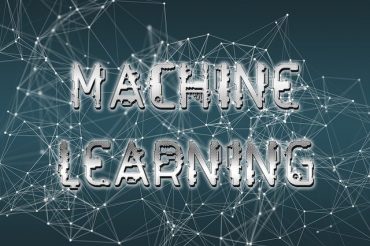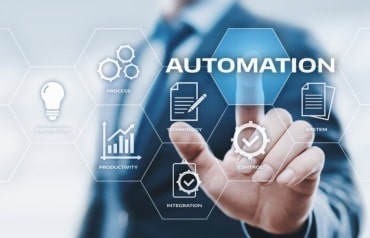
By recognizing the limitations of machine learning and implementing smart models strategically, organizations can harness the full potential of AI in price optimization.
Figuring out the best price for a product or service requires a great deal of preparation. Companies need to sift through an enormous amount of information, including past sales figures, customer purchase behavior, competitor prices, inventories, and more. It may sound daunting and overwhelming, particularly for organizations with thousands of products and data siloed in multiple spreadsheets.
Traditional methods of setting optimal price points are hardly effective as they rely on manual analysis and predefined rules, have limited capabilities to process massive data, and are relatively slow to respond to market changes.
AI-powered pricing has become a real game-changing technology. It applies machine learning and deep learning algorithms to process large volumes of data, recognize patterns, make accurate predictions, and drive better decision-making.
There are a plethora of AI-informed price optimization solutions. Take CPQ Salesforce software as an example. The tool helps companies, particularly Salesforce CRM clients, tailor their pricing strategies according to customer preferences, market conditions, and competitor activities in real time.
Just like any new technology, AI-powered pricing is not without its drawbacks. Businesses should be aware of potential challenges artificial intelligence poses to ensure its ethical and effective implementation. In this article, we’ll analyze how exactly AI reshapes price optimization and break down the advantages and downsides of using AI for your pricing strategy.
5 Ways AI Transforms Pricing Strategies
Traditionally, the pricing process was time-consuming and error-prone because it hinged on the human factor. A great deal of calculations and analysis were performed manually. As a result, businesses skipped valuable insights from large data sets, struggled to adapt to constant market changes, and couldn’t make efficient pricing decisions.
AI’s advanced analytical and computational abilities totally transform the way businesses devise their pricing strategies. We’ll single out the key factors attesting to the disruptive potential of AI pricing optimization.
1. Data Analytics
AI systems unlock the power of big data, which can be overwhelming for human analysts. These smart tools can process huge chunks of information from diverse sources in real time. Combining a variety of data points, such as sales history, stock levels, customer purchase behavior, seasonal trends, etc., enables companies to develop comprehensive pricing strategies.
2. Predictive Capabilities
Through the use of machine learning and deep learning algorithms, AI tools can sift through arrays of data (past sales records, customer demographics, purchase history, economic indicators), recognize subtle patterns that human analysts cannot easily discern, and forecast trends and market changes.
For example, AI models can anticipate demand fluctuations and suggest increasing prices during peak seasons or giving discounts when sales are slow. They can also predict how different customer segments will respond to cost changes so that companies can fix an optimal price and not turn shoppers away.
3. Dynamic Pricing
AI supports dynamic pricing strategies. By continuously analyzing data from different resources, identifying complex patterns within these data sets, and generating predictions based on the training information, AI systems empower businesses to adjust prices in real time to boost sales, keep up with the competition, and increase customer satisfaction.
4. Personalization
Unlike traditional pricing models that fail to adapt to changing consumer preferences, AI algorithms enable businesses to tailor their pricing strategies to individual buyers. AI uses customer data, in particular purchase and browsing history and demographics, to split customers into groups with similar buying behavior and price sensitivity.
Based on customer segmentation, companies can adapt pricing offers to each group through tiered pricing options, targeted discounts and promotions, upselling, and cross-selling. Personalization goes a long way in improving customer retention and increasing repeat purchases. Companies across many industries are increasingly adopting this approach.
For example, Netflix makes the most of AI algorithms to tailor pricing plans according to user preferences. It analyzes multiple data, including subscribers’ content preferences, viewing history, and time spent on the platform. Following this information, the streaming service introduces various pricing plans that accommodate user needs.
5. Automation and Error Reduction
As we mentioned earlier, setting optimal prices is a time-consuming process, especially when performed manually. Imagine your sales rep needs to adjust price points for thousands of products. This will surely eat into their time. Moreover, there’s a risk of making errors.
Machine learning models can automate this tedious work and free up team members for strategic tasks like marketing campaigns or product development. In addition to updating prices, AI algorithms outperform humans in processing vast amounts of data, making accurate calculations, and quickly responding to market fluctuations.
Thanks to AI automation, businesses can streamline pricing processes, reduce manual labor, cut operational costs, and maintain a significant competitive advantage.
Reasons for Adopting AI-Powered Price Optimization
Integrating AI with pricing optimization makes the process smoother, more efficient, dynamic, and accurate. Top business players like Amazon, Uber, Walmart, and Netflix have successfully leveraged AI-driven price optimization to adapt to real-time market conditions, maximize profit, and enhance customer satisfaction. For many industries, AI is a go-to solution for supporting their pricing strategies because of the great benefits this cutting-edge technology brings.
Higher Profit Margins
Maximizing revenue is one of the ultimate goals of every business. Considering the high competition and constantly changing customer preferences, it can be really hard to find the sweet spot price to make enough profit.
AI is the key to future success. With the capacity to analyze huge amounts of historical sales data, customer behavior, competitive prices, and market trends, AI algorithms ensure businesses capture the full value of their product or service and don’t deter customers. This leads to better sales and financial well-being.
Increased Customer Loyalty
A one-size-fits-all approach to price optimization is no longer relevant. Through AI, companies can personalize their pricing strategies and cater to all customer groups based on their budget and needs. When buyers see fair prices, they feel valued and are more likely to return for future purchases.
Personalized pricing creates a win-win situation for businesses. First, it fosters customer satisfaction and loyalty and helps build stronger relationships with shoppers. Second, a larger number of happy clients translates into higher sales.
Data-Informed Decisions
AI eliminates any guesswork in pricing decisions. By diving deep into market data, customer purchase behavior, and competitor pricing strategy, AI algorithms provide businesses with clear insights and enable them to come up with a data-driven price optimization solution that correlates with their objectives and helps them stay competitive.
Take Airbnb as an example. The platform’s AI-powered Smart Pricing tool factors in multiple aspects, such as demand, location, historical data, and local events, to help hosts set the right price for their accommodation, maximize profits, and stay competitive.
Improved Agility
Injecting AI into their pricing processes allows businesses to respond quickly to market changes and set prices almost instantly. For example, one of the leaders in the retail industry, Amazon, applies a dynamic pricing strategy, updating an average product’s cost multiple times a day.
Amazon’s repricing feature is powered by AI algorithms, namely machine learning and deep learning, and big data analytics. The marketplace titan takes into account a host of aspects, such as customer demand, inventory level, and consumer behavior, as well as historical and current market data, to optimize prices in a way that boosts sales and maximizes profits.
Uber is another prime example of AI-driven pricing optimization. The ride-sharing giant leverages AI capabilities, like demand forecasting and data analysis, to dynamically adjust prices. During rush hours or higher demand, Uber increases rates. This strategy motivates more drivers to become available while giving passengers the choice of whether to agree to a higher fare or wait for prices to go down.
See also: https://www.rtinsights.com/retail-is-the-ultimate-testing-ground-for-ai-ml/
Potential Drawbacks of AI-Powered Pricing
While AI-based price optimization can be highly effective, businesses shouldn’t overlook its downsides. The major concerns include:
Data privacy and security. AI algorithms are trained on massive amounts of data that may include customer-sensitive information (purchase history, browsing behavior, personal details). While this information is essential for tailoring price optimization tactics to address market demand and accommodate customer preferences, it remains a lucrative target for cyberattacks.
It’s of utmost importance that companies adhere to data privacy laws and regulations, such as the General Data Protection Regulation (GDPR) in the European Union or the California Consumer Privacy Act (CCPA), and implement robust security measures to ensure sensitive customer and business information is not compromised.
Accuracy of Data. AI’s performance heavily relies on the quantity and quality of data you feed it. Inaccurate, incomplete, or non-representative data can mislead the machine learning models, causing companies to make subpar price optimization decisions.
Suppose you’re running an outdoor apparel online store and using AI for price optimization. Due to a glitch, the smart model misinterprets the inventory and demand data on backpacks. It perceives high demand while showing lower stock levels than what’s really available.
AI immediately suggests increasing the price tag. However, the high cost turns potential customers away, resulting in lost sales, a negative shopping experience, and a tarnished brand image.
To prevent such harmful pricing scenarios, companies should consider investing in data cleansing processes, constantly auditing and verifying the information they train AI models on, and meticulously tracking the pricing process.
Lack of human touch. Machine learning and deep learning algorithms excel at analyzing vast data sets quickly and accurately. Despite such impressive computational and analytical capabilities, they lack human creativity and intuition, especially when it comes to complex pricing decisions. That’s why human-AI collaboration is the key to a winning pricing strategy.
AI should be taken as an effective tool to complement human skills, but not replace them. It falls short of seeing the bigger picture, grasping nuances, or identifying unique pricing opportunities. Human intuition, experience, critical thinking, and creativity fill the gap and enable businesses to unlock the full potential of machine learning models for sustainable growth.
Complexity and implementation costs. Upfront costs are inevitable should your company choose to implement dynamic pricing strategies. Expenses may vary depending on the AI solution (a software license or custom model) and specific business requirements.
One of the main prerequisites of effective AI integration is a robust technology infrastructure. This covers not only the hardware and software but also data architecture. Businesses might need to upgrade their infrastructure so as to handle large volumes of data that machine learning models consume.
Yet, all effort and expense will be in vain if you don’t have a team of pros in data science and machine learning who can not only select quality software and configure it but also help decipher AI-generated insights and weave them into price optimization strategies. While adding an extra layer of cost and complexity, training current staff or hiring new employees will be necessary for a successful deployment of AI-powered pricing.
Key Takeaways
Dozens of factors go into making optimal pricing decisions. Traditional pricing approaches fail to adapt quickly to market changes and consumer demands. Therefore, businesses are increasingly turning to AI models to enhance their price optimization tactics.
With AI hand-holding them through the process, companies can introduce price changes faster, more accurately, and with consumer needs in mind. By automating manual tasks, analyzing big data, identifying hidden patterns, and making accurate predictions, AI systems become a valuable tool for preparing effective pricing strategies.
Given the unmatched capabilities of AI in price optimization, businesses should also be aware of the potential shortcomings of this advanced technology, such as privacy and security concerns, data quality, and more. By recognizing the limitations of machine learning and implementing smart models strategically, organizations can harness the full potential of AI solutions.






























